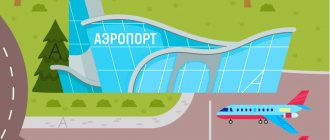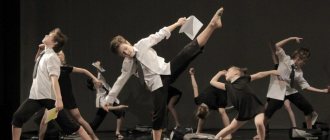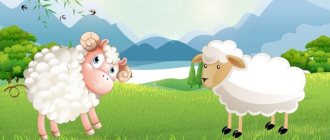You can teach a preschooler or elementary school student to read in different ways: through online courses with an individual teacher, using colorful mobile applications and classic paper textbooks.
You can start practicing as early as 3-4 years old, the main thing is to captivate the child and practice regularly. To maintain interest and improve reading skills, combine methods and use modern technology.
You can learn letters in animated alphabets, read syllables with audio-accompanied tasks, consolidate knowledge and practice with interactive exercises and mini-games, and a reward system will reinforce the child’s confidence in his abilities.
We have collected a variety of materials for you that will help you teach your child to read from scratch.
Online courses
Online reading school “Bright Lessons”
Website : https://readingschool.yarkiedeti.ru Phone Cost : 5000 RUR/course
36 interactive reading lessons for children from 3.5 to 7 years old.
The course includes:
- A set of exciting interactive games and exercises that will help your child easily learn to read
- A task to consolidate what has been learned and master new material
- Manuals for download
What will you need for classes?
- Printer (preferred)
- Zaitsev's cubes (simple cubes with letters and magnetic alphabet are also suitable).
- Paints, plasticine, paper
The scope of each lesson is designed so that the child has time to learn it in 3-4 days of repetition. You need to exercise 4-5 times a week, from 10 to 30 minutes.
Kidskey School
Website : https://kidskey.org Cost : free trial lesson; 130 USD per block of classes (about a month of training, 2 hours per week)
Reading course "Bukvaryata"
The course is a playful journey into the world of reading for children aged 4 years and older. Each task is a gaming technique that promotes the development of not only reading, but also the entire cognitive sphere of the child: speech, memory, auditory and visual perception, space.
Classes are held online, individually with a teacher at a time convenient for you. The duration of one lesson is about 1 hour. The lesson includes: an online lesson with a teacher (30-35 minutes) and interactive homework on the platform (15-30 minutes).
Course options for different ages and skill levels:
- from 1 to 6 months
- from 9 to 43 lessons
Course "Reading Trainer"
Suitable for children who have already learned to read from the Primer or have completed the Primer course. The child will consolidate the acquired knowledge, the reading speed will become higher, and the quality of understanding and memorizing the text being read will also improve. The course uses exercises that develop imagination and figurative memory.
Designed for 14 lessons (2 months). Each lesson is a separate simulator for reading words of the same structure. In each lesson, the child will read short texts, participate in game quizzes, and solve puzzles.
Reading school "InPro"
Website : https://msk.etginpro.ru Phone Cost : free trial lesson, 580 rubles/hour
Reading programs:
- “Learn to read” 4-7 years (learning from scratch)
- "Syllabic" 4-7 years ("Syllabic" method)
- “I read fluently” 4-7 years (teaching fluent reading skills)
Classes are held individually with a teacher at a time convenient for you via Skype. The lesson usually lasts 45 minutes. The remaining time is allocated to creating a working mood in the child and playing using special techniques.
Little Oxford School
Website : https://nahabino.smalloxford.ru Phone Cost : free trial lesson, from 650 RUR/lesson
Online training takes place on the zoom platform.
Learning to read from 3 years old
- Game-based learning
- Three techniques: Zaitsev’s cubes, Zhukova’s primer, Lomonosov school
Speed reading course for children from 6 years old:
- Basic (48 lessons)
- Advanced (72 lessons)
The course will help children:
- Read 2-3 times faster
- Increases the % of information remembered by 2-5 times
- Retell and correctly express your thoughts
Nikolay Zaitsev – teaching innovator
Traditional teaching based on the “phonemic-verbal” principle enslaves the freedom of speech of the child being taught and forms complexes in him, inhibiting his development - this is what teacher Nikolai Zaitsev believes.
He developed his own unique technique, more like a game than a lesson. Children move freely around the classroom (room). At the same time, they can jump, run, etc. You can master the educational material in any position - in motion or sitting, lying down. And this should start earlier - from about 3 years old.
Zaitsev cubes
All manuals are posted on walls, boards, cabinets, and tables. Usually this is a set of cardboard cubes. They are of different sizes and different colors. Some faces depict single letters, others – syllables (both simple and complex), and still others – consonants with a soft or hard sign.
Previously, the cubes can be in the form of blanks, which the teacher glues together with the children. In this case, special fillers should be placed inside:
- It is better to put sticks (wooden and plastic) into cubes with dull sounds;
- for ringing sounds, metal bottle caps are suitable;
- Bells will be hidden inside the cubes with vowel sounds.
Training using the Zaitsev method
Cubes should differ in size (both single and double). For soft warehouses - small, for hard ones - large. Color solutions also play a certain role here - each warehouse has its own shade.
In addition to cubes, tables are also used as aids, where all known warehouses are collected. This allows the child to see the entire volume that is to be studied. And this makes the teacher’s job much easier.
Memorizing letters by association
Another point that makes it quite easy to master reading is writing. It must run parallel. Before voicing the sounds being studied (not letters), the child himself must learn to translate them into signs. This can be done in various ways: moving along a sheet of paper with a pencil, across a table with a pointer, or laying out cubes.
Learning platforms
Intellect School Online Reading Program
Website : https://learningathome.rf Cost : demo lesson free, subscription - from 900 rub./3 months.
The program consists of 82 logically structured lessons designed in the form of a game. Designed for children from 4 to 7 years old, both for beginners and for those children who already know letters and are trying to read.
The program is based on the methodology of syllabic reading. Each lesson begins with learning a new letter and reviewing the letters from the previous lesson. Then the syllable block is studied, in which the child, through repeated repetitions, remembers the image and sound of an entire syllable. The third block is reading words, phrases and sentences.
Each lesson ends with praise and the child receives stars. All tasks are completed for a time, you cannot go further without completing the previous task. You need to exercise at least 2 times a week, but no more than 4 times.
Online service IQsha
Website : https://iqsha.ru Cost : 10 tasks per day - free, unlimited subscription - from 2093 rubles / 6 months.
The website contains online exercises for children from 2 to 11 years old for learning letters, sounds, and reading syllables. Opportunities are presented for learning the alphabet, vowels and consonants, letters and sounds, adding syllables, reading the first words and distinguishing sounds in words, taking into account the preschooler’s hobbies.
Find identical words, play syllabic lotto, disenchant enchanted words - the lessons are equipped with colorful pictures and illustrations, which will allow you to learn in a playful way. For children under 6 years of age who have not yet learned to read, each task is voiced. If the tasks are completed correctly, children receive cups, medals and personalized diplomas.
10 online tasks are available every day. Pay for unlimited access and get the opportunity to study without restrictions and receive homework to print every week.
Online platform "Razumeikin"
Website : https://www.razumeykin.ru Phone , +7 (925) 914-67-25 Cost : subscription - from 390 rubles/month.
On the site you will find a set of interesting online exercises for preschoolers and primary schoolchildren of various difficulty levels. All tasks are selected taking into account the developmental characteristics of a child at a particular age.
Sections:
- Teaching reading and letters to preschoolers
- Reading for children 7-8 years old
- Reading for children 9-10 years old
Children will learn not only to disassemble letters and put them into words, but also to understand the meaning of the text they just read, meet their favorite literary characters and writers, and also get acquainted with new characters. Special thematic pictures and voiced text have been prepared for each task. Some exercises involve the motor sphere.
All exercises have visual and audio accompaniment, and a multi-level reward system during the study of the material will increase the child’s interest in learning tasks.
Youtube channel “Learning to read”
Website : https://www.youtube.com Cost : free
The channel contains video lessons for independent reading with children from 5 years of age and first graders, using which your child will learn to read: syllables, words by syllables, whole words, small sentences and continuous text.
Start with speech development
Before learning to read, a child must learn to speak. And the correctness of speech development directly depends on their environment. The more intelligent the parents, the more attention they pay to the younger generation, the easier it is for the child to develop.
From the first days you need to work with your baby on speech development
Starting the first communications with adults through hooting, the baby gradually tries to imitate the speech sounds that he hears every day. And if at first these are just individual syllables, then already from the age of 2 years of normal development the child can operate with simple sentences.
Further - more, the baby moves on to word forms. And the more actively the parents communicate with the child, the more talkative he will be (in a good way). The main help in the development of a child’s speech will be reading, i.e. books that adults will read aloud to their children.
Develop your baby's interest in reading
Naturally, a small child cannot read on his own. But you can accustom him to communicate with literature from the first years of his life. It is children's books that form the correct speech development of the baby. The more often a child sees a book in the hands of his parents, the more confidence he develops in it, and the faster over time the desire to learn to read independently appears.
Interest in reading develops in a playful way
Reading should be turned into a kind of ritual - fairy tales, nursery rhymes, lullabies are best perceived before bed. The clearer and more correct the adult’s pronunciation during reading, with emotional connotation, the more memorable the phrases the child will hear will be.
And the clearer the baby’s visual images will appear. And this will further help in learning to read. After all, the better a child thinks in images, the faster and easier he learns.
About the benefits of family reading
To develop children's skill, they should read fairy tales aloud from preschool age. The child must develop not just an interest in literature - the book must become a symbol of psychological “pleasure”.
Family reading develops children's interest in it
And in the future, even magazines and books standing on shelves (and not in the hands of parents) will be associated with positive emotions and attract the child’s attention. In other words, reading books to your child instills a love of literature for life, giving impetus to the fastest learning of independent reading.
In addition, reading to children promotes their spiritual unity with their parents, bringing joy to everyone. And the child develops a feeling of family comfort, which he associates with books. In a family where there is a cult of books, children quickly develop a desire to read.
Read with your children
The best way to prepare your child for independent reading is to read a book while sitting next to your baby. He should see the pages of the book on which the text is written. This will first allow you to visually get used to the letters that involve you in the world of the sacraments.
A child’s first books should be of high quality and bright
It’s not for nothing that the first children’s books are rich in colorful illustrations. With their help, you can perceive what you hear in images drawn in the pictures. And when the child goes to first grade and begins to put letters into words, familiar phrases will already be perceived figuratively, which will make it faster and easier to learn to read.
While reading a fairy tale or nursery rhyme, try to move your child’s finger over the letters so that the baby can see which word you are reading. Visual memory will help with proper learning in the future.
Smartphone applications
IFOLICA applications
Website : https://ifolica.ru Cost : trial version - free, then - 85 rubles.
Interactive reading course for children from 3 years old. The course consists of separate applications, each of which is aimed at teaching a child to read step by step: pronouncing sounds, memorizing letters, reading syllables, reading words and reading sentences.
Applications are available on mobile devices with iOS and Android operating systems.
"Readings"
Website : https://uzelki.com; download on IOS: https://apps.apple.com Cost : 1490 rub.
Readings is a sequential educational game for children from 3 to 7 years old. It is drawn simply and clearly, and is also easy to use. The game has a story and sound: letters, spellings and words are spoken.
- Teaching reading according to the method of N. A. Zaitsev
- 40 Screens of a magical land
- 35 Mini-games that develop reading skills
- 500 words to read with illustrations and voiceovers
- 133 Sayings and riddles to read
- 132 Graphic letter templates
- 24 Metrics to Track Learning Progress
- Adaptive task difficulty
Gradually progressing through the game, the child will learn to read in an average time of 1 month (at the age of ~ 6 years) to 12 months (at 3-4 years).
“Reader.” Let's learn to read!
Download : Android https://play.google.com Cost : demo version - free, full version - 249 rubles.
“Reader” is designed for children from 1 to 7 years old. A child will be able to learn to read from scratch, even if he does not yet know the letters. The development of the application took into account the methodological ideas of Zaitsev, Doman, as well as the author’s many years of experience in teaching reading.
The application includes 10 levels, of which the first 4 are working with syllables and individual letters, and the next 6 are devoted to words. The levels are built on the principle of increasing difficulty. To make it more interesting for the child, educational tasks are interspersed with colorful mini-games.
“Luntik. Let's learn to read!
Download:
- Android: https://play.google.com
- iOS: https://apps.apple.com
Cost : demo version - free, full version - 119 rubles.
The application is designed for children from 1 to 7 years old. With this application, your child will learn to read from scratch, even if he does not yet know the letters. To make it more interesting for the child, educational tasks are interspersed with colorful mini-games.
The free version of the application includes 4 levels, the full version - 10 levels, of which the first 4 are working with syllables and individual letters, and the next 6 are dedicated to the word. The levels are built on the principle of increasing difficulty.
“Letters: learning to read by syllables for children 5-6 years old”
Download:
- iOS: https://apps.apple.com
- Android: https://play.google.com
Cost : free, includes in-app purchases
Children's app No. 1 according to Roskachestvo. “Bukovki” is a universal tool for composing any words using a convenient voiced keyboard, with which children learn to read.
In the application:
- Dividing words into warehouses and syllables
- Professional dubbing of sounds and warehouses
- Experience of existing methods of teaching reading (Zaitsev’s method, sound-letter method and others)
- Playful learning style
- Interactive thematic panoramas with many voiced objects
“Read it yourself syllable by syllable”
Download:
- iOS: https://apps.apple.com
- Android: https://play.google.com
Cost : demo version - free, full version - 159 rubles.
The child learns to read letters, syllables, and words himself. A 3-4 year old child will learn to read from scratch, and a 5-6 year old child will learn to read quickly by increasing their reading speed. The application uses words of 3-7 letters and has voice acting.
“We learn to read, we save animals. Learning letters, alphabet"
Download : Android https://play.google.com Cost : demo version - free
We learn letters, syllables and learn to read in the process of an exciting educational game for children - preschoolers from 3 to 7 years old. The application uses an effective sound method of teaching reading, similar to the Zaitsev cubes method and the principles of the Montessori method.
The game provides 2 modes of learning to read:
- Learning to spell - so that the child learns letters and understands the basics of reading
- Learning to read by syllables (words) - for children who already know letters
The game interface for children is built in accordance with the principle of the Montessori educational system - “Help me do it myself!” It is so simple that a child from 3 years old can figure it out in a minute.
The free version contains 4 training levels. The full version contains 16 training levels, arranged in increasing difficulty of words. If at the first level words consist of 2-3 letters, then at the last level they consist of 7-8 letters.
Test
This short test will help parents determine whether their child is ready to start learning to read or if they should wait. It includes 18 questions. If the answer is yes, one point is awarded.
Does your child love books?
- Does your child ask you to tell a story?
- Can he retell them himself?
- Does your child often look at books on his own?
- What is more interesting to a child in a book—the pictures or the content?
- Does your child ask you to teach him to read?
- Does he sometimes pretend to be “reading” a book?
- Is the child trying to “write” the book himself?
- Does he listen carefully to others' readings?
- Does your baby take care of his books?
- Does he have a rich vocabulary?
- Do you like reading books more than watching TV?
- Will the child be able to find a word that begins with the last letter of the word “table”?
- Trying to connect familiar letters?
- Does your child have serious problems with pronunciation?
- Does he distinguish between similar sounds, for example, Ж and Ш?
- Does he speak in sentences or separate words?
- Is your child learning to read with pleasure?
- Does he know a lot of songs and poems?
Benefits
“Quick learning to read” Nefedova E., Uzorova O.
Link to the book : https://www.litres.ru Cost : electronic version - 49 rubles, paper version - from 299 rubles.
The manual is intended for children of preschool and primary school age during the period of learning to read. A large number of exercises are offered for reading syllables, words, as well as short texts. For convenience, all words are divided into syllables. In addition, the manual contains tasks for work on phonetic, lexical and structural analysis.
“Encyclopedia of methods for teaching reading. Letters, syllables, cubes” by L. Kirillova
Link to the book : https://www.litres.ru Cost : digital version - from 139 rubles, paper version - from 216 rubles.
The book contains descriptions of various approaches and methods of teaching reading: from classical (Leo Tolstoy's alphabet and primers) to the most modern, fashionable and non-traditional (Glenn Doman's method, Tyulenev's system, computer programs for teaching reading, etc.). The book also provides extensive recommendations and exercises for practical lessons in teaching reading.
“How to teach a child to read from 3 years old” S. Fedin, D. Kuzina
Link to the book : https://www.litres.ru Cost : digital version - from 249 rubles, paper version - from 488 rubles.
The book includes seven sequential steps in teaching preschoolers to read with detailed recommendations for parents on how to properly structure the learning process and how to interest their child in reading and writing. And to consolidate the acquired skills, at the end of the book you will find a reader with funny stories.
“I want to read. For children 5-6 years old" V. A. Egupova
Link to the book : https://www.litres.ru Cost : digital version - from 99 rubles, paper version - from 111 rubles.
The purpose of the manual is to teach the child to read syllables and write words and sentences in block letters. At the same time, the child learns to distinguish between vowels and consonants, sounds and letters, hard and soft, voiced and voiceless consonants; determine the stressed vowel and the number of syllables in a word. The manual uses poems, riddles, and tongue twisters.
When is the best time to start training?
At what age should children be able to read is a question many parents ask. This, first of all, depends on how psychologically prepared the child is for learning. But it should definitely be said that school should not begin immediately before school, when children are going to 1st grade.
Children can begin to be taught at the age of 3 years, if the child himself expresses a desire to do so. But you shouldn’t force them to sit down with books - this may discourage them from further learning.
The most optimal receptive age at which to prepare for 1st grade is 5 years. And in parallel with reading, children should be taught writing (for now only in printed letters), which will help them consolidate their reading skills.
How do you know when your child is ready?
To understand how to teach a child to read, you must first decide whether the child is ready for such learning. To do this, first test the degree of development of the child.
Make sure your child is ready to learn
- If children are already speaking in sentences, they are ready for the learning process.
- The development of phonetic hearing is an important factor. Correct perception of sounds, their differences and the ability to operate with them will help you quickly and easily teach your baby.
- A child who speaks incorrectly is not able to quickly learn to read, because... poorly perceives those phonetic sounds that he himself pronounces.
- If children do not have developed imaginative thinking, it will be difficult to teach them to read quickly - the process will turn out to be purely mechanical. And in the future, the procedure itself will be too tedious and uninteresting for the baby.
- The child must have the basics of logical reasoning, which allows him to compare facts in the learning process. Teaching reading by matching pictures and words





